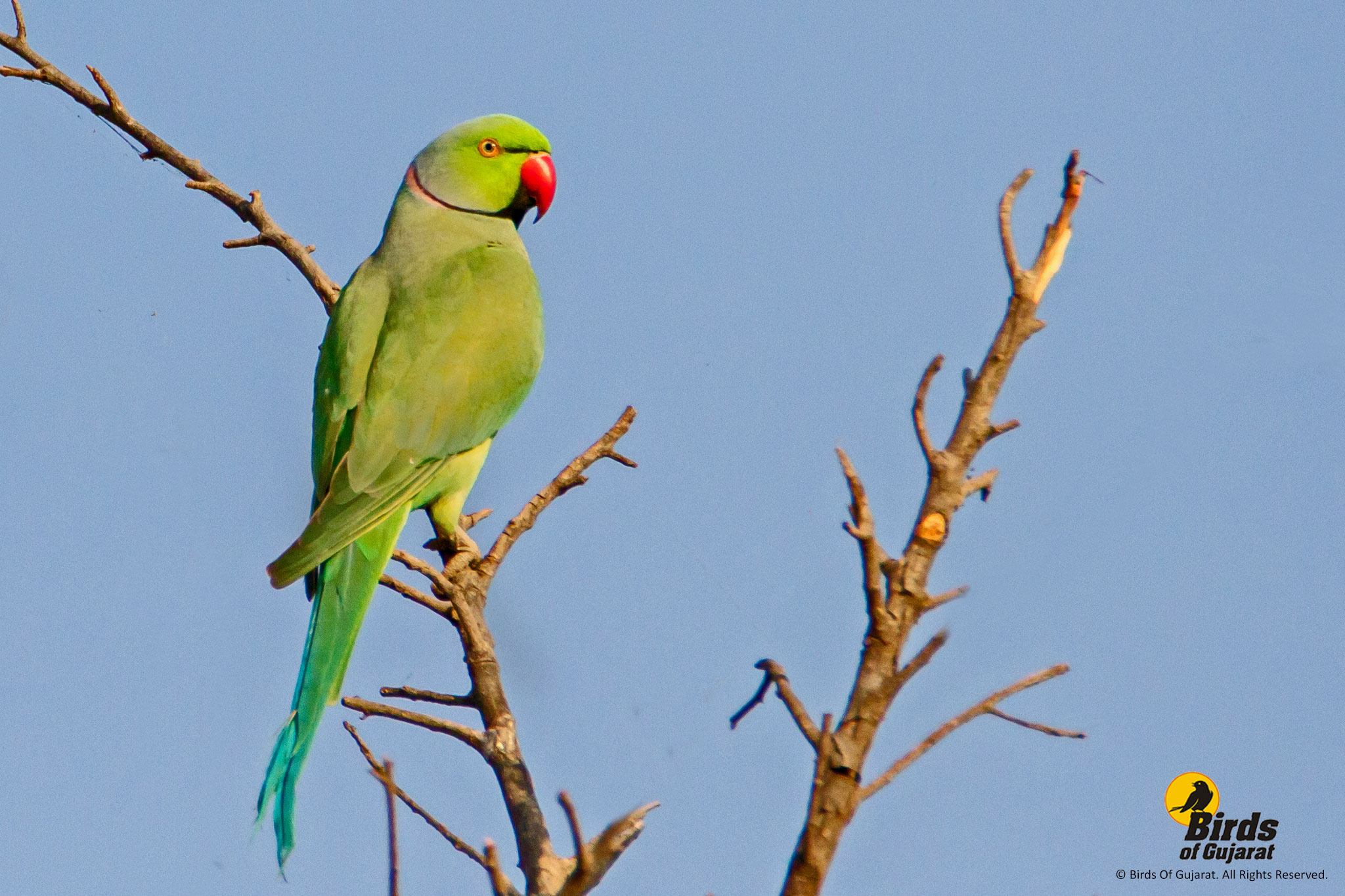
The Rose-ringed Parakeet or the Indian Ring-necks are native to Asia and Africa and can be seen in the forests, woodlands, or arid environments. It’s not uncommon to see them thrive in urban areas as well. They are mainly green in colour with a red bill and a long, tapered tail. Because of their green colour, they are very difficult to see during roosting or perching in trees. Similar to most parrots, Rose-ringed Parakeets are intelligent and make great pets. These birds are truly masters at talking and can speak with clarity that is phenomenal.
Gujarati Name
Scientific Name
Scientific Family
Psittaculidae
Status in Gujarat
Resident
IUCN Status

- Rose-ringed Parakeet mostly have a green plumage with a bit of yellow hue and hints of blue on the tail and head.
- Males have a black, pink and blue collar, for which the species is named.
- Female has only a dull emerald-green collar, and lacks blue, pink and black on the head.
- The pinkish-red beak is slightly rounded and hooked.
- The iris is yellowish-white and the feet are greenish-grey.
- Juvenile resembles adult female, but it shows yellower plumage, tail is shorter and the pinkish-red bill is pale-tipped.
Generally found in a range of woodlands through savanna grassland. They are also very commonly seen in open farmlands, parks and gardens in urban areas and human civilizations.
- They use their muscular tongue to adjust the nuts and seeds at the right position between their beak and then crack the shell open.
- They all join in, to mob their enemy, flapping their wings, pecking and screaming until it retreats.
- It uses its bill like a third foot when climbing. It stretches its neck out and takes a hold on a suitable branch with its bill, before following with its feet. They use a similar method when walking on a narrow perch.
- They are very noisy, especially at communal roosts.
- Both males and females have the ability to mimic human speech and can learn a vocabulary of up to 250 words.
